Boxing
How to Wrap Your Hands in Boxing
It’s important to protect your tools of the trade, so here is a step-by-step guide on how to wrap your hands in boxing
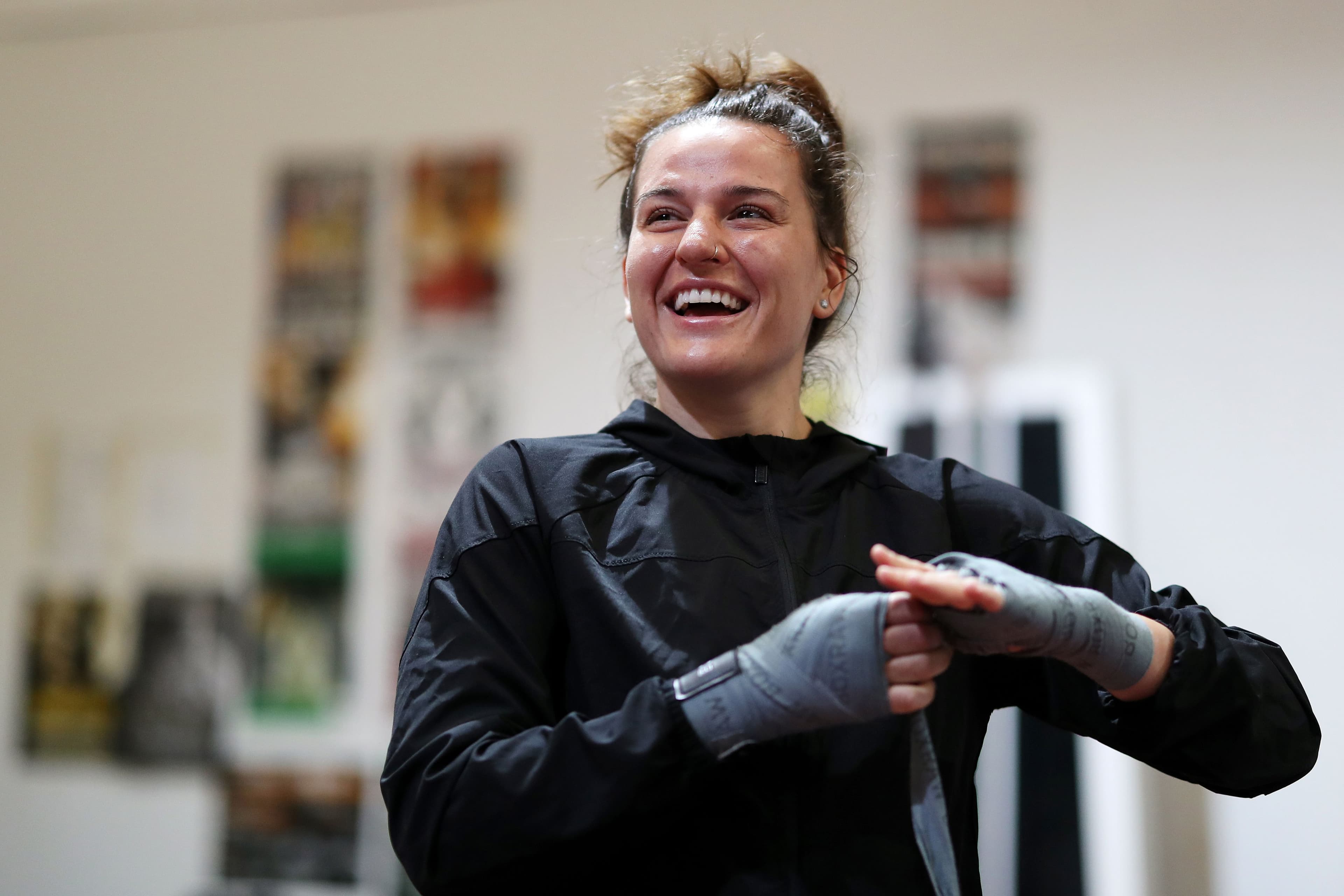
Chantelle Cameron wrapping her hands//Getty Images
Before lacing up your gloves, you have to make sure your fists are properly protected first
Before putting on those gloves, boxers have to properly protect their hands, as they are the most important tool to a fighter.
To do this, there is a vital piece of fight kit called hand wraps, which are a thin band of cotton that, when rolled up tight before use, will easily fit into the palm of your hand. When unrolled, they will extend out to anything between 150-450cm in length.
These important wraps sound very simplistic, but they are actually quite complicated to use correctly, so below is an easy to follow guide as an introduction.
Choosing the right wrap
There are many different types of wraps and it’s important to choose the right one for the right training session.
Cotton Wraps – The most familiar of all are cotton wraps, which are your standard ones. These are suitable for all aspects of training, including sparring, and will be available in kids and adults, in varying lengths from short to long. A boxer will wrap these around their hand, knuckles and wrist to provide the protection they require, and are fastened at the end by a Velcro strap.
Mexican Wraps – Similar to the above but woven in elastic to allow a stretching capability, which moulds to the hand and movement more easily. They are more flexible and comfortable, but not as durable or hardwearing, but perfect for all forms of training.
Gel Wraps – These are just as common as the above, but far less popular. These are easier to apply because they aren’t wrapped around the hand manually, instead they are fingerless gloves that can be slipped onto the hand with ease. These are often well padded, providing decent protection for the knuckles, but they are not always first choice for boxers due to the lack of support provided in the wrist area. Although, you can buy gel wraps with an attached wrap to the wrist, which you can rotate a few times around the wrist to provide that extra support, secured by a Velcro strap.
Competition Wraps – These are the most serious, safe and professional of all the wraps, comprised of gauze and tape. These can only be applied by another person, usually a coach, cutman or someone who is adept and experienced at applying them. In competitions, there will be strict guidelines on how much tape and equipment that’s allowed to be used to ensure a fair playing field.
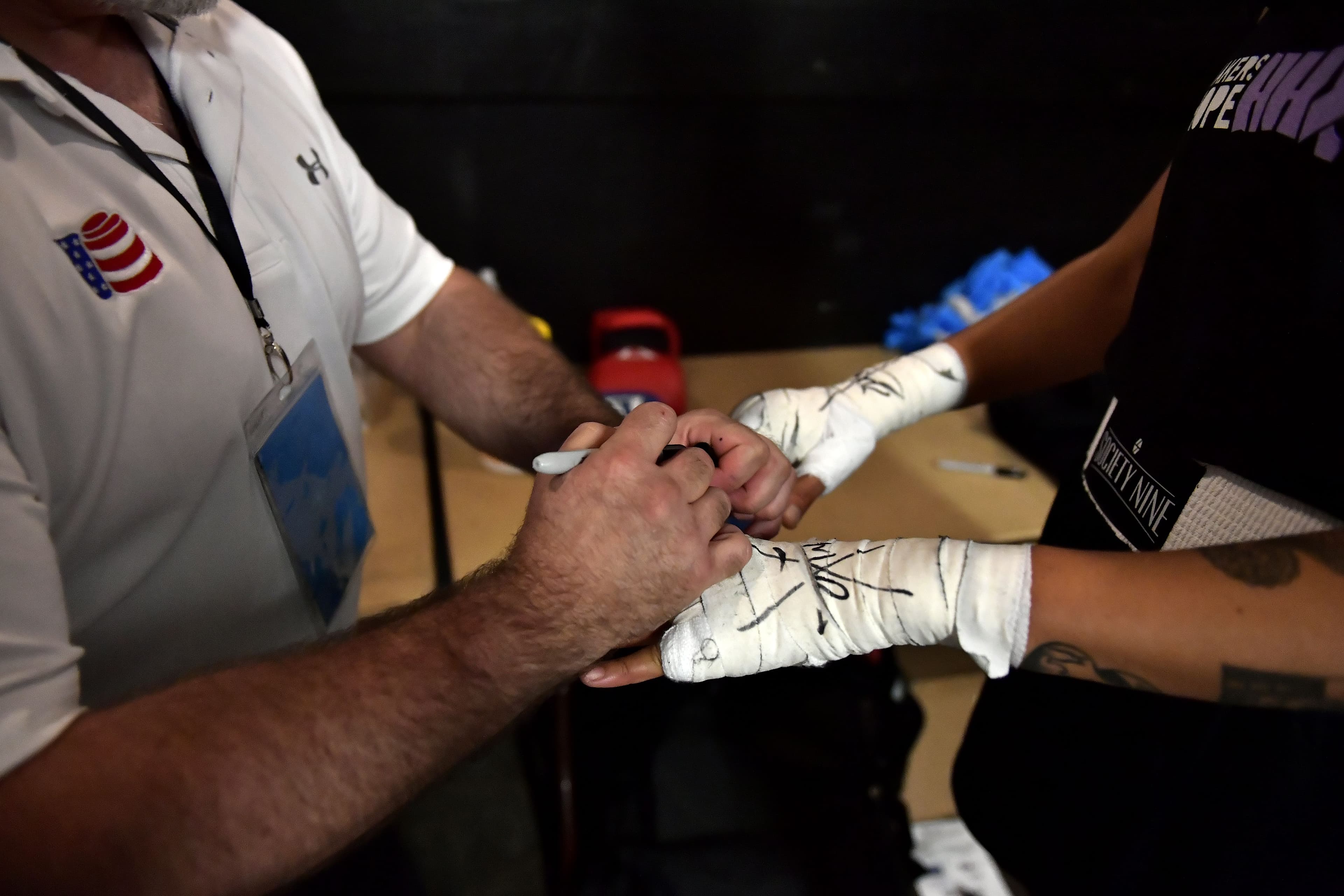
Boxers wrapping their hands//Getty Images
Tips before getting started
Wrapping hands can either be a quick task or an art form. At first, it will require a lot of practice to get it just right, but, until then, it’s trial and error.
Spread ‘em: Spread the fingers out wide, stretching them to allow for the same movement when training, making sure the wraps are moulded to that activity.
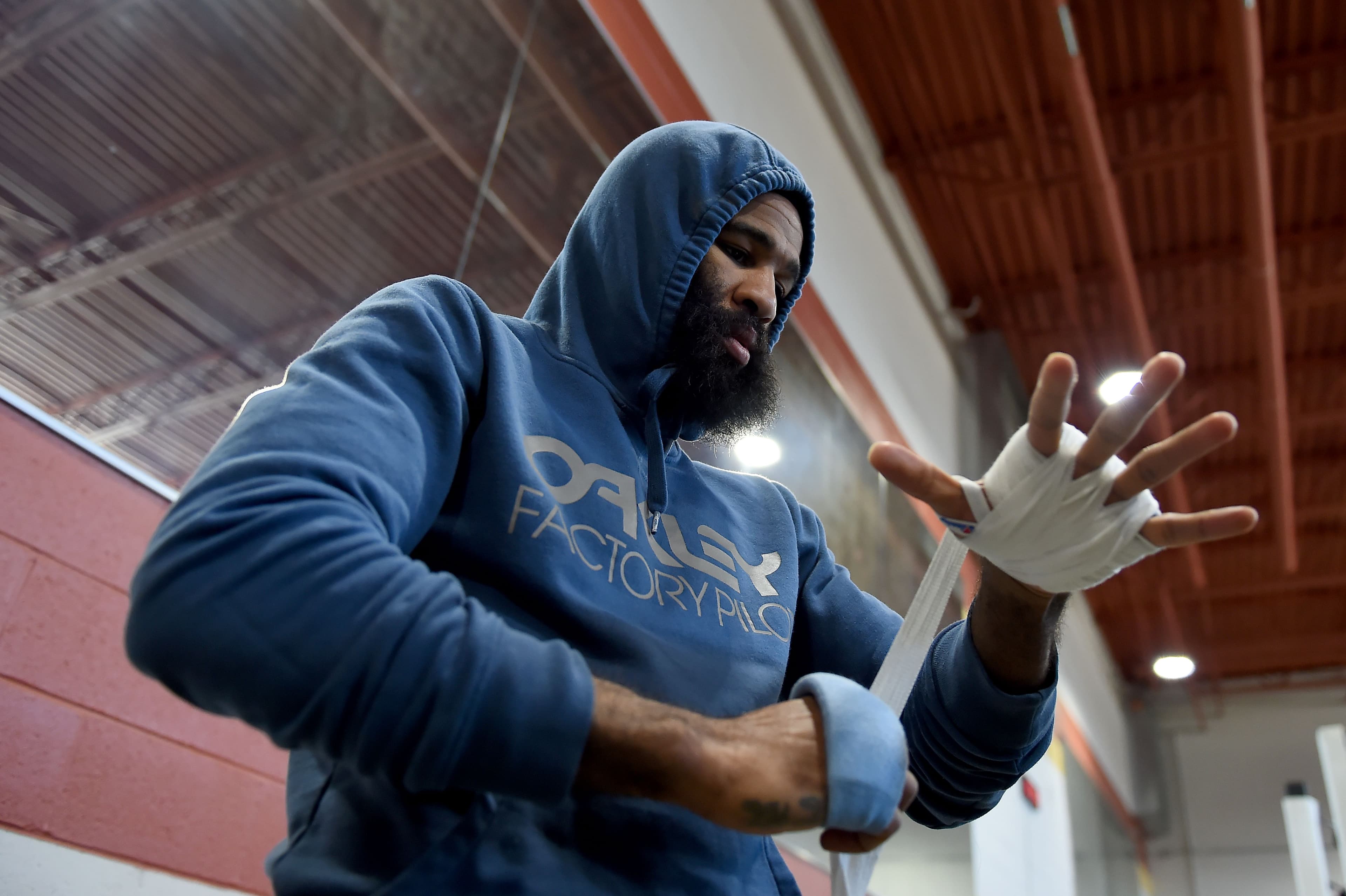
Lamont Peterson wraps his hands//Getty Images
Keep straight: Keep wrists, palm, knuckles, fingers straight at all times, otherwise it could cause either a slackness or even a tightness in the end product.
Loop it: Firstly, the hand wrap will have a loop at the start end, which is placed over the thumb, with the palm facing upwards. Always make sure you have the wraps the right way around, which you will easily be able to tell by looking at the stitching on the loop and wraps, the same way you can tell if your sock is inside out. If you get it the wrong way round, then the Velcro strap at the end of the process will be facing the wrong way and you may have to restart.
Wrinkle-free: When wrapping around, make sure to keep the band flat and wrinkle-free, no twists. If it’s not completely flat when it’s wrapping around, it could be uncomfortable and could even pinch the skin to cause abrasions.
Time to wrap things up
- Stretch fingers out wide
- Place thumb through the loop at the start of the wrap
Wrap around the wrist at least two or three times, keeping it flat and wrinkle-free, as mentioned earlier
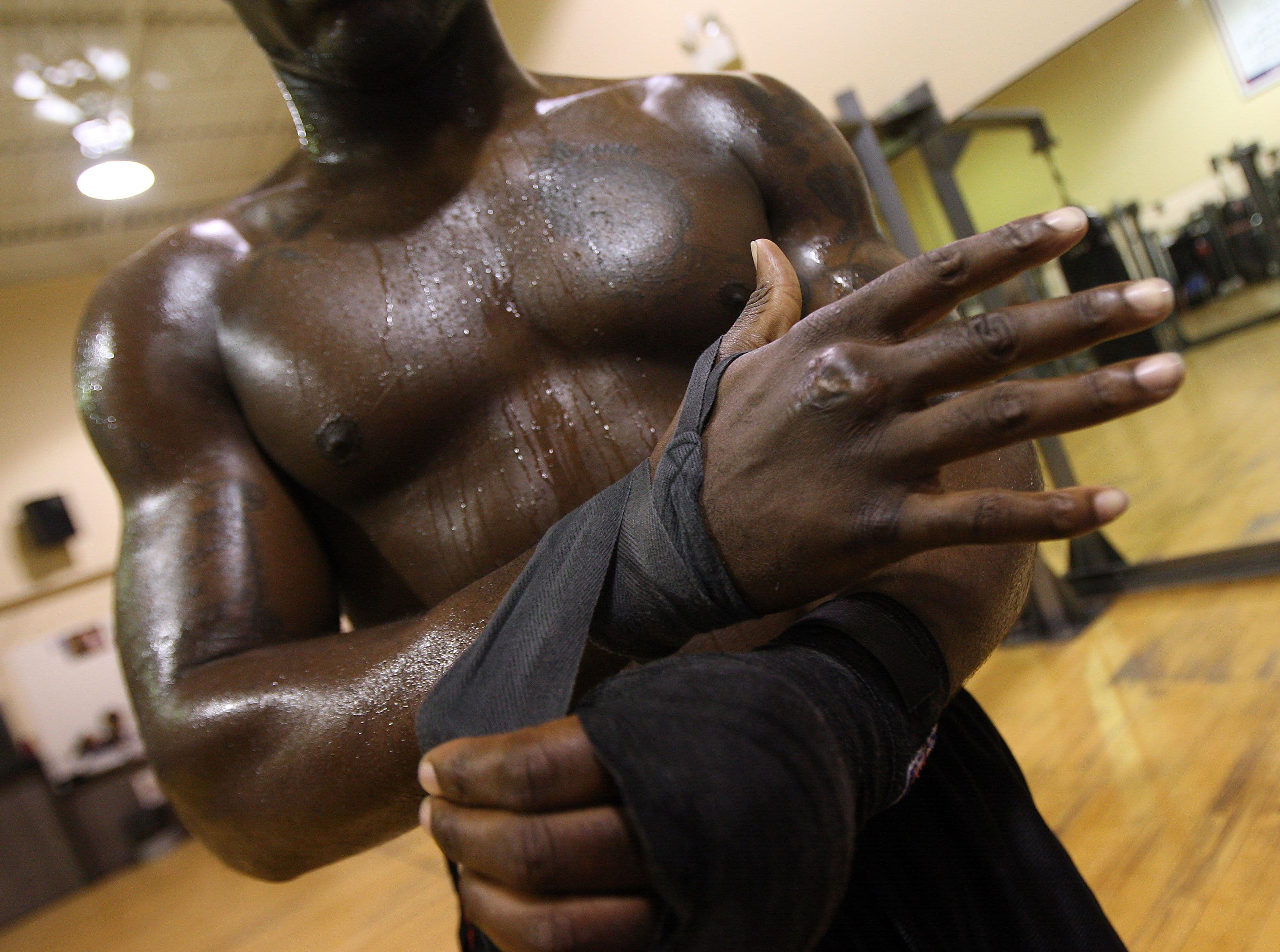
Shevar Henry Wrapping his hand //Getty Images
- Now begin to wrap around the area above the thumb and across the palm
Wrap fingers by starting on the inside of the wrist by the thumb and wrapping in between each digit, starting with the pinkie, to the inside of the ring and middle finger, finishing in between the middle and index finger
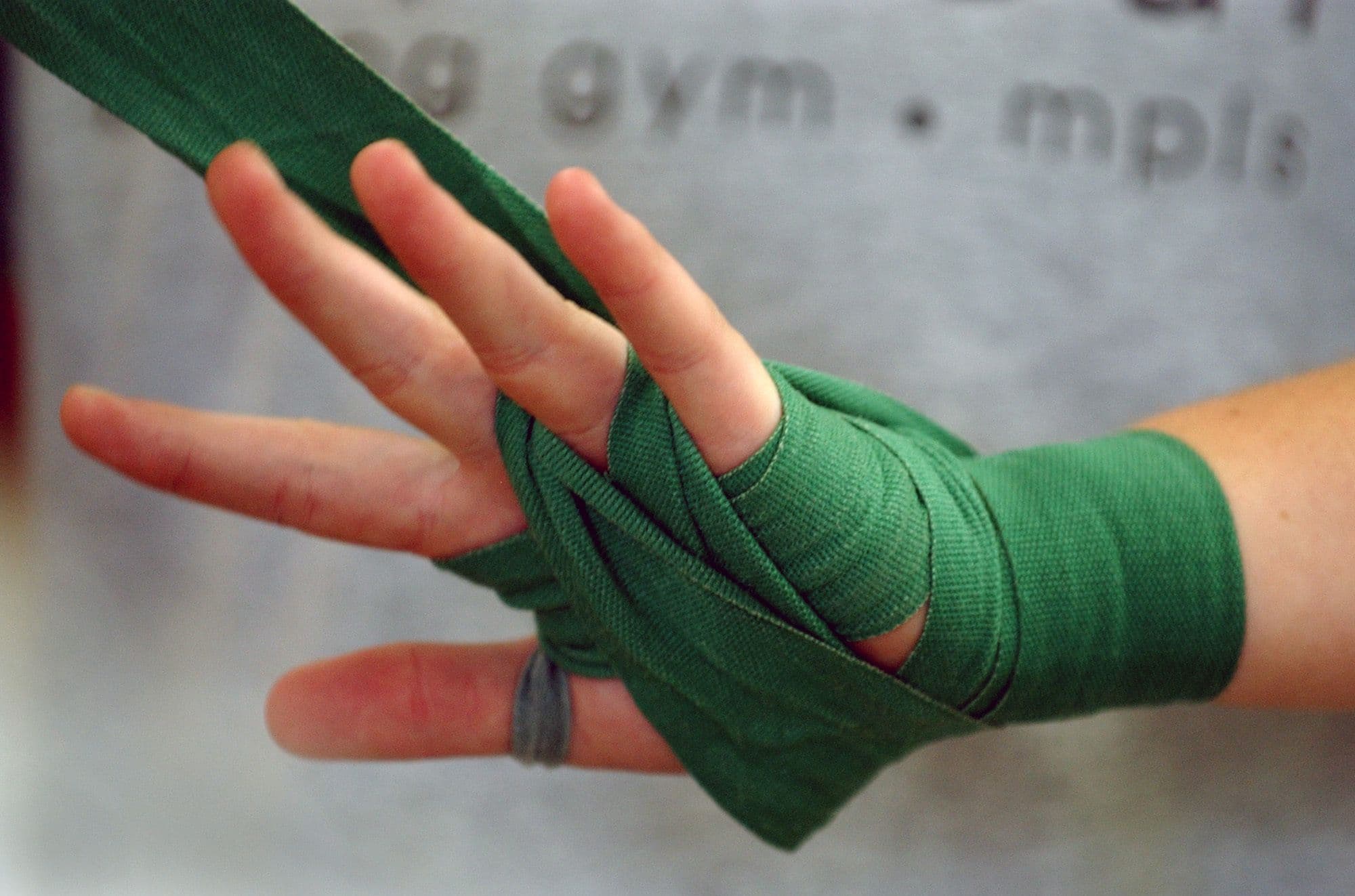
Dagney Willey demonstrates how to wrap hands//Getty Images
To complete the finger wrapping section, wrap around above the thumb on the outside of the index finger and wrap back around the top and underside of the knuckles going around a few times until the length is coming to an end
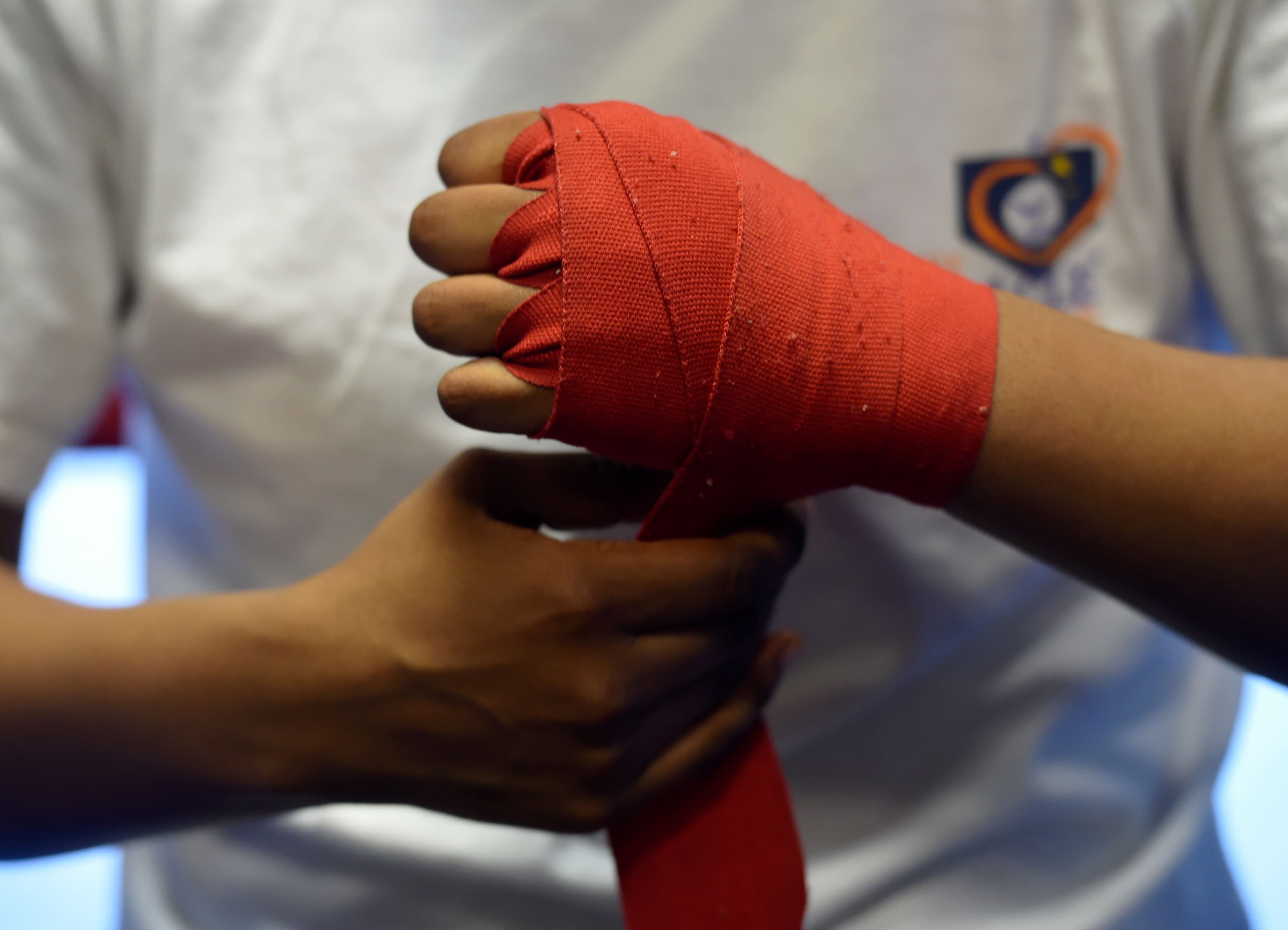
Williams HS wraps her hands//Getty Images
- Secure the wrap by wrapping diagonally back down to the wrist area, where you can keep wrapping around until you run out of length and can fasten the Velcro
- After fastening the Velcro strap, flex the hand to ensure it’s comfortable and not to tight. If it’s not comfortable enough, such as too tight or too loose, it could cause issues either with a lack of adequate protection or the possibility of skin abrasions
- Repeat the process with the other hand. It’s always best to start with the weaker hand first, dominant hand second
Seconds out… box!
Now that the most important part is done and the hands are well protected, it’s time to box.
Normally, there will be a few rounds of shadow boxing and skipping to be completed before either bag work, pads or sparring.
During these warm-up rounds, you will learn then if you have wrapped those hands adequately enough. If the wraps are too loose, they will start to unwind; if wrapped too tight, it’ll will instantly result in discomfort.
If done correctly, then good job, now go and enjoy the session.

Tim has over 27 years experience within the sports industry, working for football clubs Arsenal FC and Millwall FC, and boxing news websites British Boxing News, Boxing Social and Global Boxing News. His boxing articles have been published in Boxing News Magazine, national newspapers, plus many other major news outlets.